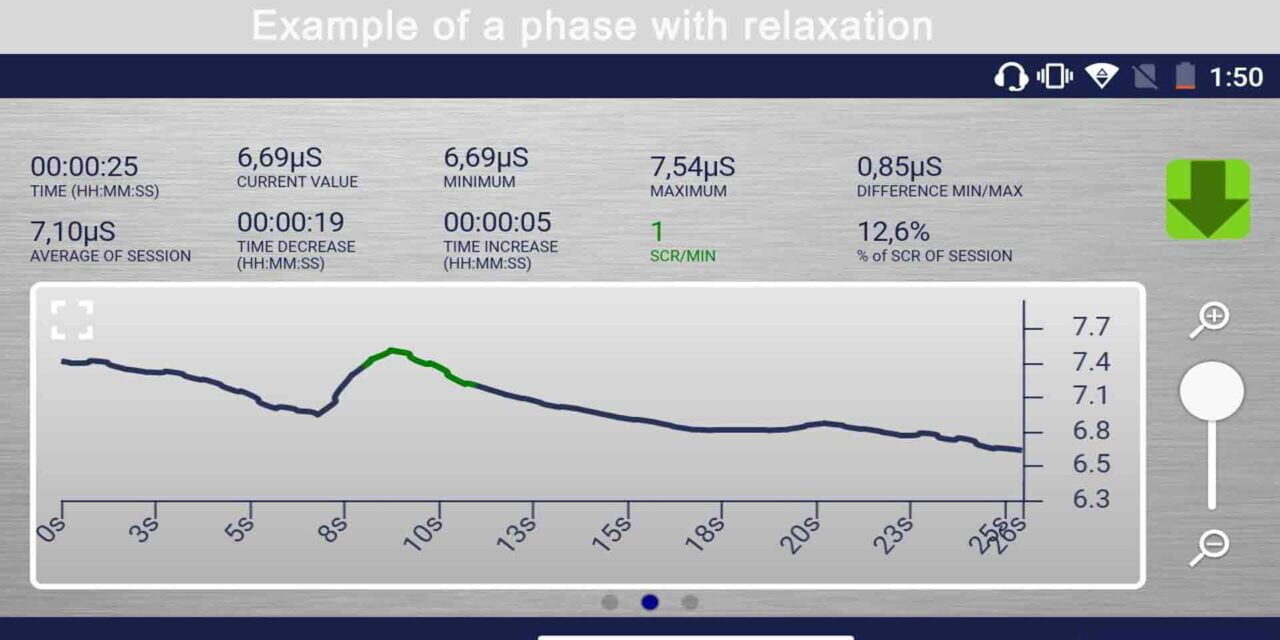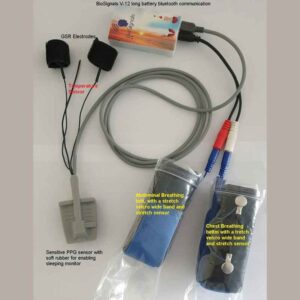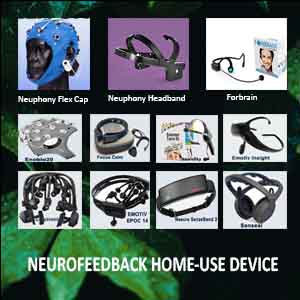Galvanic Skin Response (GSR) Biofeedback
Galvanic skin response (GSR) biofeedback is a powerful tool that helps individuals gain insight into their physiological and emotional states. By measuring galvanic skin conductance, or the skin’s electrical activity influenced by sweat gland activity, GSR biofeedback provides valuable feedback on how stress and emotions affect the body. This method empowers users to understand their responses to various stimuli and develop strategies for managing stress and enhancing emotional regulation. This article will explore the principles behind GSR biofeedback, its applications, and how it can improve overall well-being.
Table of Contents
Toggle- Galvanic Skin Response (GSR) Biofeedback
- Understanding Skin Response and Its Measurement
- GALVANIC SKIN RESPONSE BIOFEEDBACK TRAINING
- Indications for Using GSR Biofeedback
- STAGES OF GALVANIC SKIN RESPONSE BIOFEEDBACK TRAINING
- HOW DOES A GSR SENSOR WORK?
- FAQs: Galvanic Skin Response (GSR) Biofeedback
- HOME USE GALVANIC SKIN RESPONSE DEVICE FOR BIOFEEDBACK
Understanding Skin Response and Its Measurement
Skin response, also known as galvanic skin response (GSR), electrodermal response (EDR), or galvanic skin conductance (SC), is a measurement method based on bio-electrical properties of the skin: it measures the continuous variations in the electrical characteristics of the skin, i.e., for instance, the conductance, caused by the changes of the human body sweating. Skin conductance depends on the activity of the sweat glands of the skin and reacts to the most minor changes, which we can’t detect as wet hands yet.
The Autonomic Nervous System controls the activity of the perspiration glands and includes two main subunits: the parasympathetic nervous system and the sympathetic nervous system. The perspiration glands of the skin are solely controlled by the sympathetic nervous system, making them a good indicator of inner strain and stress. The sympathetic nervous system reacts to stress stimuli by activating all the “emergency functions” of the body, bringing it to a state of heightened responsiveness: Pulse and blood pressure rise along with the glucose level in the blood and general alertness. With these changes comes the effect of “wet hands,” which relies on the electrodermal response measurement.
Galvanic Skin Conductance and Emotional Responses
We all know a time in our lives when our hands got wet. Think of the speech you gave in front of an audience or a job interview. Can you remember the cold, sweaty hands if you were excited?
A scientific theory for this effect assumes that our ancestors needed wet hands to firm up their grip on things, for example, in an escape or pursuit through challenging terrain. When the threatening situation is over, the parasympathetic nervous system becomes dominant: Pulse, blood pressure, and glucose levels fall again. The body enters a rest state to allow recovery. The hands become dry again.
The increased activity of the perspiration glands during a stimulus (stress) is easily visible through the associated increase in galvanic skin conductance. The stimulus can be a mental or emotional strain, taking a sudden, deep breath, or a startling action like someone unexpectedly clapping hands or the loud drop of an item onto the floor.
Thus, skin conductance is not under conscious control. When the autonomic nervous system (SNS) sympathetic branch becomes highly aroused, sweat gland activity increases, which raises skin conductance. Conversely, sweat gland activity and skin conductance decrease when the SNS is less aroused. Such a system is directly involved in emotional behavioral regulation. Additional studies highlighted the relationship between the GSR signal and some mental states, such as stress, drowsiness, and engagement.
GALVANIC SKIN RESPONSE BIOFEEDBACK TRAINING
The Role and Mechanism of Galvanic Skin Response Biofeedback
Galvanic skin conductance biofeedback is a universal tool for biofeedback training. It is widely used in the therapy of anxiety, panic disorders, and specific phobias, as well as for managing stress and its effects. Further use fields are high blood pressure, tinnitus, and sleep disorders. If you suffer from a severe disorder or medical condition, always consult a professional physician or therapist, and do not attempt to treat yourself.
Biofeedback training can significantly reduce stress and its physical symptoms by helping individuals intentionally lower their skin response.
A GSR sensor allows us to measure sweat gland activity related to emotional arousal. The electrical properties of the skin are used to measure GSR. Specifically, skin resistance varies with sweat gland activity, i.e., the more excellent sweat gland activity, the more perspiration, and thus, less skin resistance. The most common measure of a GSR signal is not resistance but conductance. Conductance is the opposite of resistance and is measured in Siemens (Conductance = 1/Resistance). The conductance makes the signal interpretation easier since the more significant the sweat gland activity, the higher the skin conductance.
Measuring and Utilizing Skin Conductance in Biofeedback
The Skin Response measures the Skin Conductance in Micro Siemens or μSiemens. We measure skin conductance in μSiemens, symbolized as μS, where μ represents a millionth, and Siemens is the unit of conductance. “Skin resistance” is also a common term, simply indicating the inverse of conductance (1S = 1/Ω).
Through the changes of this small current, we can measure the activity of the skin’s perspiration glands far below the threshold of self-perception. As sweat gland activity increases, the skin becomes wetter, improving the current’s conduction. As a result, Skin Conductance rises.
The human body has varying numbers of sweat glands, with the highest concentration in the hand and foot regions (200–600 sweat glands per cm²). These areas are where we typically collect GSR signals.
The GSR signal is elementary to record: generally, two electrodes at the same hand’s upper or middle phalanges of the index and middle finger are necessary. A low-voltage current between the two electrodes measures electrodermal activity (EDA). Skin Response is a precise device. It can measure the most minor changes that would be impossible to recognize yourself. Recently, developers have created new commercial healthcare devices that are increasingly wearable and stylish, such as bracelets and watches.
The goal of Galvanic skin response biofeedback training is twofold:
- a reduction of the permanent, basic level of stress and
- a reduction of the immediate stress response to a particular stimulus.
Galvanic skin response biofeedback
Indications for Using GSR Biofeedback
Galvanic Skin Response (GSR) biofeedback is a powerful tool for monitoring and improving emotional and physiological regulation. By measuring subtle changes in skin conductance associated with sweat gland activity, this method offers valuable insight into the body’s stress response. GSR biofeedback is widely used in both clinical and personal development settings. Below are the most common indications for its use:
Stress Management
GSR is highly sensitive to stress-related physiological changes. It is commonly used to help individuals recognize their stress responses in real time and develop techniques—such as deep breathing or mindfulness—to reduce overall stress levels.
Anxiety and Panic Disorders
Because GSR reflects emotional arousal, it is effective in helping individuals with generalized anxiety, social anxiety, and panic attacks. Through regular biofeedback sessions, users learn to detect early signs of anxiety and apply calming strategies before symptoms escalate.
Emotional Dysregulation
People who struggle with mood swings, emotional reactivity, or difficulty managing emotions can benefit from GSR biofeedback. It helps improve emotional awareness and teaches better control over physiological arousal during emotionally charged situations.
Attention Deficit and Hyperactivity (ADHD)
GSR biofeedback is increasingly used in children and adolescents with ADHD. It can improve self-regulation, enhance focus, and reduce impulsive behavior by helping users monitor and reduce emotional overstimulation.
Insomnia and Sleep Disorders
Many sleep problems are stress-related. GSR biofeedback helps users relax their nervous systems before bedtime, reduce nighttime arousal, and improve sleep onset and quality through calming feedback and relaxation training.
Chronic Pain and Tension
Chronic pain often has an emotional component. By reducing physiological arousal, GSR biofeedback may help lower perceived pain levels, especially in conditions such as fibromyalgia, migraines, or tension-related pain.
Psychophysiological Disorders
Conditions like hypertension, irritable bowel syndrome (IBS), and headaches—where psychological stress contributes to physical symptoms—can be managed more effectively with GSR biofeedback as part of a broader mind-body approach.
Performance Optimization
GSR biofeedback is not just for health. It is also used by performers, athletes, speakers, and professionals to manage pre-performance anxiety, stay calm under pressure, and maintain mental clarity and emotional control.
STAGES OF GALVANIC SKIN RESPONSE BIOFEEDBACK TRAINING
Stages of Biofeedback Training
Biofeedback training consists of four training stages.
Stage One: Initial Training
For the first training, scheduling about 60 to 90 minutes of free time for undisturbed, flexible training is necessary.
Stage Two: Practicing Conscious Relaxation
The second stage consists of multiple sessions to exercise conscious relaxation with the feedback signal. At the start, the values are measured and watched for a while. Then, the client tries to bring them down through active, conscious intervention. There are many ways to do this, such as breathing in a controlled and calm pattern, muscle relaxation techniques, or autosuggestion. The exact way is up to a person, his knowledge of relaxation, and his will to experiment. A part of the training focuses on the general reduction of the tonic skin conductance level, while a second part focuses on reducing the fluctuations. In the second training phase, the aim is to lower the general level of skin conductance and lessen the increase as a result of a stimulus as quickly as possible. They train to reduce their general tension and be able to switch off flexibly after stressful situations.
Stage Three: Handling Stress Stimuli
In the third stage, stress stimuli (or stressors) are intentionally used to help improve stress management skills. Skin conductance biofeedback is ideal for this targeted training because it responds quickly and sensitively to stress, reflecting both the strength and significance of each stimulus.
Training begins with a few minutes of rest. Afterward, apply a specific stressor. Nearly everyone has certain situations or tasks that cause distress. For example, if you find public speaking stressful, try visualizing yourself giving a speech to a large audience. This mental exercise will likely cause a noticeable increase in your skin response. You aim to practice relaxation techniques to reduce the response and reduce fluctuations.
Alternate between three or four rounds of relaxation and stress stimuli during the session. Conclude the training with a final relaxation phase to help reinforce your ability to recover after exposure to stressors.
It is necessary to perform multiple sessions over a more extended period until you feel that your stress response is significantly reduced or that you recover quicker after a stressful situation.
Stage Four: Independent Relaxation without Feedback
During the fourth stage, improved relaxation with lower skin response levels and fewer fluctuations, even without feedback, is necessary.
Record a ten-minute baseline WITHOUT watching the measurement while relaxing as best as possible. Afterward, compare it to the baseline measurement from the first stage. Your overall skin conductance level should have dropped, and the spontaneous fluctuations should have reduced. Your daily condition can affect the measurement a lot, so repeat the record of the baseline later again if you feel you had an unusual day.
When you encounter stressful situations in everyday life, recall the training situation and use your new skills to stay relaxed. Skill comes with practice!
Differentiating Types of Stress in Biofeedback
Biofeedback also highlights the difference between “distress” and “eustress.”
- Distress is negative stress associated with feeling overwhelmed, angry, or upset. This stress typically indicates an unfavorable physiological response.
- Eustress is positive stress, experienced as excitement, motivation, or happiness. Though it also elevates skin conductance, this state is generally positive and can enhance productivity or focus.
The GSR signal reflects the intensity of the emotional response, not the emotion type. High readings from a distress response signal a need for intervention, while high readings from eustress can be embraced and utilized for motivation and energy.
By learning to interpret and manage these signals, biofeedback users can effectively differentiate and regulate their emotional states.
HOW DOES A GSR SENSOR WORK?
Most modern GSR electrodes feature an Ag/AgCl (silver-chloride) contact point with the skin. Ag/AgCl electrodes are preferred because they are affordable, durable, and safe for human contact. These electrodes also accurately transmit signals from ionic activity. Some models come with an ionic gel pre-applied to enhance signal fidelity. Alternatively, users can apply ionic gel separately for a similar effect.
Once the signal reaches the electrode, it passes through the lead wire to the GSR device. From there, the data may be stored in the device and uploaded later or sent wirelessly to a computer system. In some setups, the signal is transmitted directly through a wired connection to a computer. Different GSR sensors offer various transmission methods, and the choice depends on the type of research being conducted.
Skin conductance is captured using easy-to-apply skin electrodes. Data is acquired with 1 – 10 Hz sampling rates and measured in micro-Siemens (μS) units.
FAQs: Galvanic Skin Response (GSR) Biofeedback
GSR biofeedback measures changes in skin conductance linked to emotional arousal and stress. This data helps users recognize and regulate their physiological reactions, supporting emotional balance and stress reduction.
GSR biofeedback is effective for managing anxiety, stress, emotional instability, ADHD, insomnia, and even chronic pain. It’s also used to enhance emotional control and focus in high-performance settings.
Yes. The BioSignals 5 Sensors Biofeedback Device is safe and effective for children and adolescents. It supports emotional development, reduces anxiety, and improves attention through engaging, gamified feedback experiences.
Some users report feeling more relaxed and self-aware after just a few sessions. Consistent practice with the BioSignals device over a few weeks typically leads to noticeable improvements in stress management and emotional regulation.
GSR biofeedback tracks emotional arousal via skin conductance. HRV biofeedback reflects heart rhythm variability and autonomic balance, while EMG monitors muscle tension. The BioSignals 5 Sensors Biofeedback Device combines GSR with HRV, respiration, and skin temperature sensors for a comprehensive view of your physiological state.







